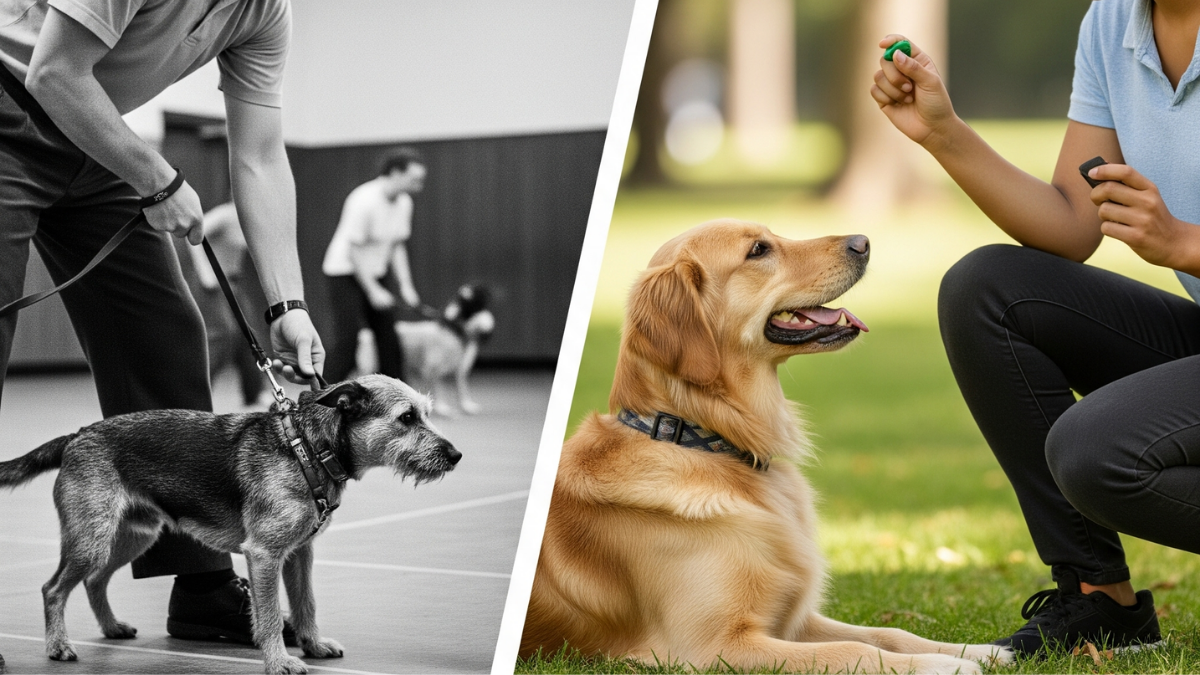The Trajectory of Dog Training and Its Potential Influences

Dog training has evolved with science, welfare, and culture while respecting tradition. We explore what shapes training and what may lie ahead.
The Trajectory of Dog Training and Its Potential Influences
Dog training has not always looked as it does today. Like many aspects of human-animal relationships, it has shifted in response to scientific knowledge, societal values, and our evolving expectations of the dogs who share our lives.
A Glance Back: Traditional Training Approaches
Historically, dog training leaned heavily on compulsion-based methods, with trainers using choke chains, physical corrections, and a focus on “obedience at all costs.” Dogs were expected to fit human expectations with little consideration of their emotional state. For working dogs, training was often passed down through word-of-mouth or tradition, with few formal education routes available for handlers.
The Influence of Science
The mid-to-late 20th century saw significant developments in our understanding of animal learning, with operant and classical conditioning theories influencing dog training. The rise of positive reinforcement methods brought a shift away from dominance-based approaches, prioritising communication, motivation, and relationship-building.
We began to understand that behaviours are driven by reinforcement and that kindness and clarity often lead to more reliable learning. Training moved from suppressing behaviours to teaching alternative, desirable ones.
Respecting Experience While Seeking Change
There is no doubt that dominance-based methods can produce results, and many handlers, particularly within gundog training and competition, have a wealth of knowledge and experience that should not be dismissed outright. People often train in this way because it has worked for them, and from their perspective, there is no reason to change.
It is also important to recognise that choosing to train using more traditional methods does not automatically mean a trainer is harsh or brutal. Like in all areas of dog training, there is a wide range of approaches within traditional methods, and many handlers who use them deeply care about their dogs' welfare and work hard to build a bond with their dogs in the best way they know.
However, we must consider at what cost some methods may have on the dog's emotional wellbeing and the relationship we build with them. As trainers who choose to use a different approach, it is not our role to shout down or rant at those who train differently—doing so rarely influences change and only creates division.
Instead, we can look at the exercises and learning that underpin these traditional methods and adapt them to suit our dogs and our chosen ethical frameworks, achieving the same outcomes through kind, science-led training.
By demonstrating what is possible with positive reinforcement and welfare-focused methods—and by producing well-trained, capable dogs using these approaches—we quietly but effectively influence the wider training culture. Change happens not through condemnation but by doing things well, proving they work, and allowing others to see for themselves.
Cultural Shifts and Changing Dog Roles
As dogs have become increasingly part of the family rather than solely workers, expectations around their behaviour have changed. Dogs are now expected to navigate busy parks, café culture, and family homes, leading to a rise in pet dog training classes.
Simultaneously, within working dog communities, including gundog training, there is a growing movement to adopt science-based methods while respecting the value of fieldwork skills.
Welfare as a Driving Force
Canine welfare is now a cornerstone of responsible training. We recognise that training methods should protect emotional and physical wellbeing, with organisations and welfare bodies advocating for evidence-based, kind methods that consider the dog as a learner, not just a tool.
Technology and Accessibility
Online learning, wearable technology for tracking behaviour, and advanced diagnostic tools have expanded how we support dogs and owners. From video analysis to remote coaching, technology is opening doors for tailored, accessible training.
Potential Influences on the Future of Dog Training
-
Further Scientific Research: Advances in canine cognition and welfare will continue to shape methods.
-
Welfare Legislation: Laws may increasingly influence permissible training tools and approaches.
-
Cultural Trends: As dogs’ roles diversify (e.g., therapy, sports, family pets), training will need to adapt.
-
Technology Integration: Apps, virtual reality, and AI may change how training plans are delivered.
-
Environmental Factors: Urbanisation and environmental concerns may shape where and how dogs are exercised and trained.
A Field Always Evolving
Dog training is on a continuous trajectory, shaped by what we learn about dogs, what we value in our relationships with them, and how we interpret and implement this knowledge.
As trainers, guardians, and handlers, being open to new evidence, reflective in our practices, and respectful of the experiences of others will ensure we move forward positively.
Because at its heart, training is about communication, trust, and a shared language between species—a language we are still learning to speak better.
 Sue Watkins
Sue Watkins 